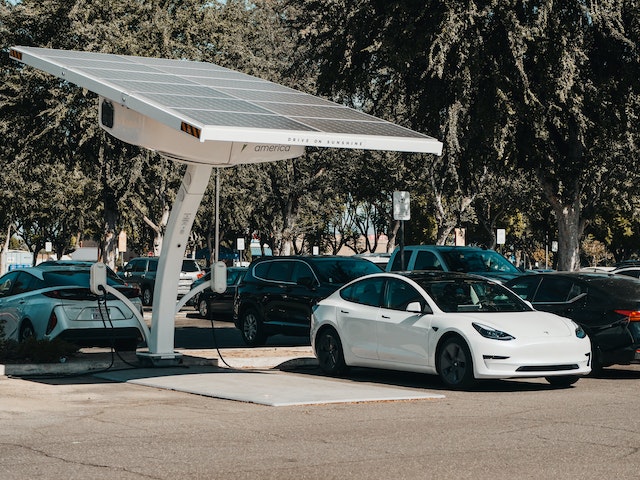
The automotive industry is evolving rapidly, and the shift toward electric vehicles (EVs) is a significant driving force. Research and development in the EV sector are at the forefront of this revolution, paving the way for a sustainable and cleaner future.
The demand for EVs has been steadily increasing, with major automotive manufacturers investing heavily in research and development to improve the technology and bring EVs to the mass market. This blog explores the latest advancements and innovations in the research and development of the EV sector and their impact on the future of transportation.
The Importance of Research and Development in the EV Sector:
Research and development are crucial for the success of the EV sector. It enables manufacturers to develop and improve technology, increase efficiency, and reduce costs. The following are some of the benefits of investing in research and development in the EV sector:
- Improving battery technology to increase range and reduce charging time
- Developing lightweight materials to reduce the weight of EVs and increase efficiency
- Enhancing performance and safety features
- Developing new charging infrastructure and renewable energy sources
- Advancing autonomous driving technology
Advancements in Battery Technology:
One of the main challenges for the EV sector is improving battery technology. Battery technology is vital in determining the range and charging time of EVs. In recent years, significant advancements have been made in battery technology, resulting in higher energy density and longer ranges.
New materials and processes are being developed to improve the performance of batteries. Solid-state batteries are one of the most promising technologies for the future of EVs. They offer higher energy density, faster charging times, and longer lifespans than current lithium-ion batteries.
Improving Range and Charging Infrastructure:
Improving the range and charging infrastructure is crucial for the success of the EV sector. Manufacturers are developing new technologies to improve the range of EVs, such as better aerodynamics, regenerative braking, and improved battery technology.
Charging infrastructure is also a significant factor in the adoption of EVs. The development of fast-charging technology is critical to reducing charging times and making EVs more convenient for consumers. The installation of more charging stations in public places and at homes is also essential for the widespread adoption of EVs.
Enhancing EV Performance:
The performance of EVs has improved significantly in recent years. Manufacturers are investing in research and development to enhance the power and efficiency of EVs. Improvements in motor technology, drivetrains, and lightweight materials are all contributing to the enhanced performance of EVs.
Autonomous Driving Technology in EVs:
Autonomous driving technology is another area of research and development in the EV sector. The development of autonomous driving technology in EVs is expected to improve safety, reduce congestion, and provide a more convenient driving experience. Manufacturers are investing in research and development to improve the accuracy and reliability of autonomous driving technology.
The Future of EV Research and Development:
The future of EV research and development looks promising, with manufacturers and researchers working tirelessly to improve the technology and make EVs more accessible to consumers. Here are some areas of focus that are likely to shape the future of the EV sector:
- Battery Technology: The development of solid-state batteries is a significant area of research and development in the EV sector. Solid-state batteries offer higher energy density, faster charging times, and longer lifespans than current lithium-ion batteries. The development of solid-state batteries will significantly improve the range and charging time of EVs.
- Lightweight Materials: The use of lightweight materials, such as carbon fiber and aluminum, is increasing in the automotive industry. Lightweight materials reduce the weight of EVs, which increases efficiency and range. The development of new lightweight materials is expected to play a significant role in the future of the EV sector.
- Autonomous Driving Technology: The development of autonomous driving technology in EVs is expected to revolutionize the automotive industry. Autonomous driving technology will enhance safety, reduce congestion, and provide a more convenient driving experience. The continued investment in the research and development of autonomous driving technology will bring about significant advancements in the EV sector.
- Charging Infrastructure: The development of fast-charging technology and the installation of more charging stations in public places and at homes is essential for the widespread adoption of EVs. The continued investment in charging infrastructure will significantly improve the convenience and accessibility of EVs for consumers.
- Renewable Energy: The development of renewable energy sources, such as solar and wind power, is expected to play a significant role in the future of the EV sector. The integration of renewable energy sources with EV charging infrastructure will reduce emissions and increase the sustainability of transportation.
Types of Electric and Hybrid Vehicle Powertrains
Electric and hybrid vehicles (EVs) are becoming increasingly popular as consumers seek more environmentally friendly transportation options. One of the critical factors that determine the performance and efficiency of an EV is its powertrain. Here are the three main types of powertrains used in electric and hybrid vehicles:
- Battery Electric Vehicle (BEV) Powertrain: A BEV powertrain relies entirely on an electric motor and a battery for power. The battery stores electricity that powers the electric motor, which drives the wheels. BEVs have no internal combustion engine and do not emit any exhaust emissions. They are the most environmentally friendly type of EV.
- Plug-in Hybrid Electric Vehicle (PHEV) Powertrain: A PHEV powertrain combines an electric motor and a battery with an internal combustion engine. The battery can be charged by plugging the vehicle into an electrical outlet or by using regenerative braking. PHEVs can run on electric power alone, but they also have a gasoline or diesel engine that can power the vehicle when the battery is depleted. PHEVs emit fewer emissions than traditional gasoline or diesel vehicles, but they are not as environmentally friendly as BEVs.
- Hybrid Electric Vehicle (HEV) Powertrain: An HEV powertrain combines an electric motor and a battery with an internal combustion engine. The battery is charged through regenerative braking, and the electric motor assists the engine in powering the vehicle. HEVs cannot run on electric power alone and rely on the internal combustion engine to provide power when necessary. HEVs emit fewer emissions than traditional gasoline or diesel vehicles but are not as environmentally friendly as BEVs or PHEVs.
Conclusion:
The research and development in the EV sector are advancing rapidly, with significant advancements being made in battery technology, lightweight materials, autonomous driving technology, charging infrastructure, and renewable energy. The continued investment in research and development will bring about significant improvements in the efficiency, affordability, and accessibility of EVs, paving the way for a sustainable and cleaner future.
Read Next Blog:
Job Opportunities in the Electric Vehicle Industry






